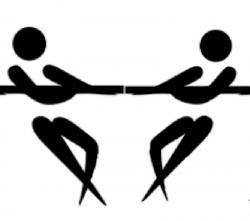You will not solve your skills gap by competing for them in the marketplace. Buying the skills is to expensive and does not work. You have to build them into your team. Let’s start with a simple but very important concept:
Pay raises for time served or enhanced value?
Most organizations provide for pay raises on what I call “Time Served”. We all have seen these types of programs – after six months you will have an evaluation and an adjustment which is within a fairly tight range. What I have found is that great people are demotivated by time served compensation plans. Why? Time served plans are based on the lowest common denominator.
Great people, by nature, will increase their value much faster than the lowest common denominator. Do you remember back in school when the class was going much slower than the speed you could master the material? Bad employees are fine with time served plans because they ARE the lowest common denominator.
Pay Differences between employees should reward and retain top performers and motivate all others
Great employees are motivated by value based plans because they can set their own timetable. However, they want to be compensated at the time of the value-add and not some artificial time-based program which has nothing in common with the timetable of their value increase.
This is corrected by having a value-based compensation program (Value Pathing) with objective criteria set by the company. The more you can show the path and the rewards the more the employees will stay with you. If you can show the rewards will indeed be given when they achieve the objectives of the path, you will reinforce the need for them to continue walking the path. The employees who complete the path will be standing on a mountaintop which provides the pay, benefits and status which they desire and you need.
Build the path and the employees will bring the value
Too many times when I review the pay of an organization’s employees, the spread between the Good to Great employees and the Average to Bad is not wide enough. The pay goal for the Good to Great is what they are truly worth to you.
For instance, when you lose a Good to Great employee and your first thought is you are going to have to pay more to replace him, you are missing something. Why would you be willing to pay someone you do not know more than an employee who works for you now? The pay goal for an Average to Bad employee is to motivate them to learn more, attain more experience and add value. You will then be able to pay them more. The last pay goal is to force out the truly bad employee.



